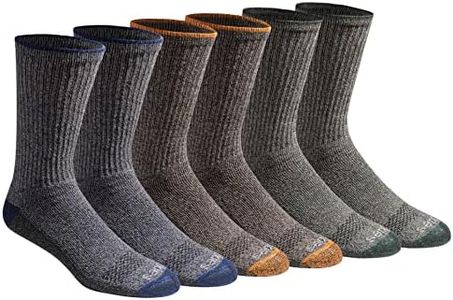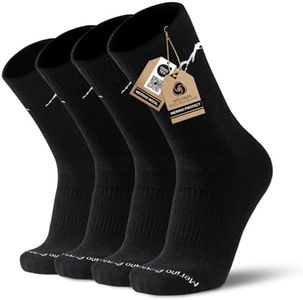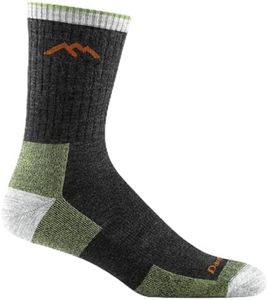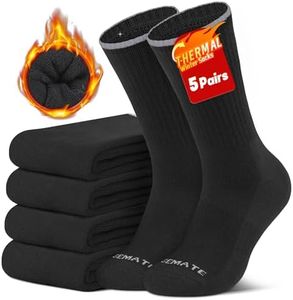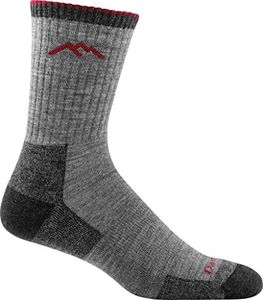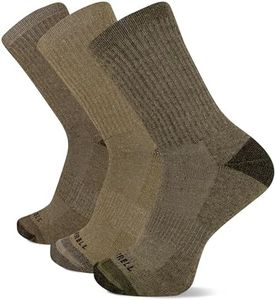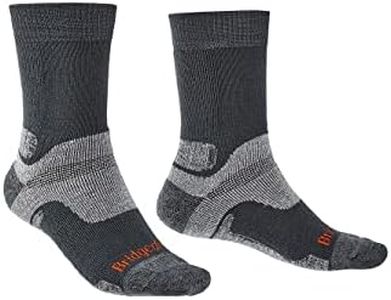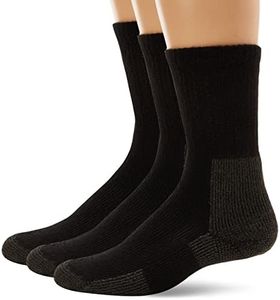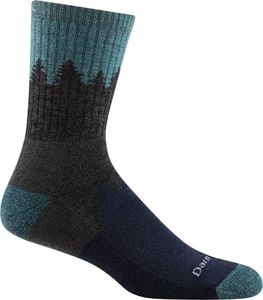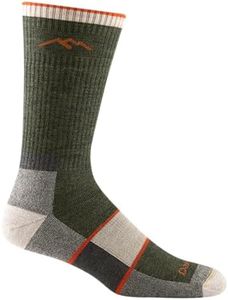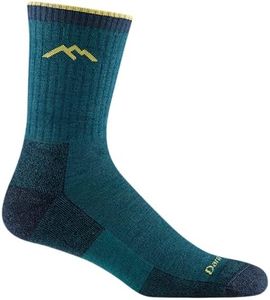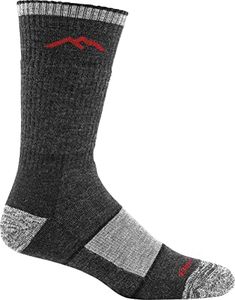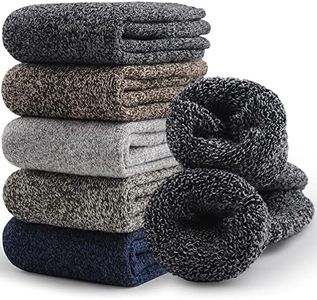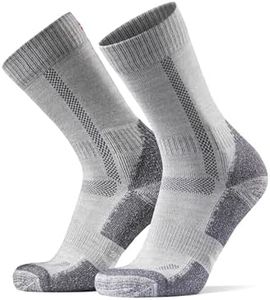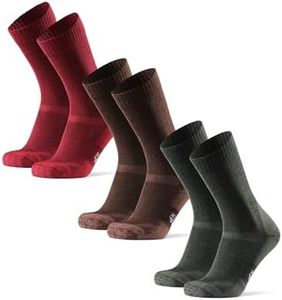We Use CookiesWe use cookies to enhance the security, performance,
functionality and for analytical and promotional activities. By continuing to browse this site you
are agreeing to our privacy policy
10 Best Hiking Socks For Men
From leading brands and best sellers available on the web.Buying Guide for the Best Hiking Socks For Men
Choosing the right hiking socks is more important than it may seem. They keep your feet dry, comfortable, and help prevent blisters during long walks or hikes. When buying hiking socks, you should focus on features that affect comfort, moisture control, and durability, which are all critical for a pleasant hiking experience. Think about the types of trails you hike, the typical weather conditions, and the kind of shoes or boots you wear, as these factors will influence the best choice for you.MaterialThe material of hiking socks directly impacts breathability, moisture-wicking, softness, and durability. Common materials include wool (especially merino wool), synthetic fibers like polyester or nylon, and blends. Wool offers natural moisture-wicking and warmth, making it ideal in cooler or variable weather. Synthetics dry quickly and can be very durable, making them great for warmer conditions or frequent use. To choose the right material, consider the climate you'll be hiking in and your comfort preferences—wool blends for cooler and mixed climates, synthetics for hot weather or if you sweat a lot.
CushioningCushioning refers to the amount of padding in the sock, especially on the heel, toe, and sole. This affects comfort and shock absorption. Lightweight or no-cushion socks are cooler and fit better in tight shoes, great for hot weather or short, easy trails. Medium cushioning provides more comfort for mid-length hikes and mixed terrain, while heavy cushioning is best suited for long hikes, rough terrain, or cold weather when you want maximum support and warmth. Think about the distance, terrain difficulty, and your sensitivity to pressure underfoot to decide which level is best for your needs.
HeightSock height determines how much of your lower leg is covered and protected. Options range from no-show and ankle socks to crew and knee-high lengths. Low-cut socks work well with trail runners in mild conditions, while crew-length or higher socks are typical choices with boots to prevent rubbing and debris from getting in. If you hike in areas with brush, rocks, or wear high boots, taller socks offer extra protection. Your shoe choice and trail conditions should guide this decision.
FitA good fit means the sock closely matches the shape of your foot without bunching, slipping, or causing pressure points. Poorly fitting socks can lead to blisters or discomfort. Look for socks that come in true-to-size options and, if possible, try them on. Some socks have slight compression or built-in arch support for a secure fit. Consider your main shoe size and whether you prefer a snug or looser feel, as well as if you need extra support.
Moisture ManagementMoisture management is how well the sock can move sweat away from your skin and dry quickly. This is crucial for comfort and to prevent blisters. Wool is naturally moisture-wicking and works well even when wet, while synthetic fibers can also be very effective at pulling moisture away. If you have sweaty feet or hike in humid conditions, prioritize socks labeled as moisture-wicking and quick-drying for the best experience.
DurabilityDurability refers to how well the socks hold up to repeated wear and washes. Heavier fabrics or reinforced areas (like the heel and toe) are more resistant to holes and thinning. If you hike frequently or on rugged terrain, go for socks with some reinforcement and higher durability ratings. If you mostly hike occasionally or on gentle trails, lighter socks may be sufficient.
